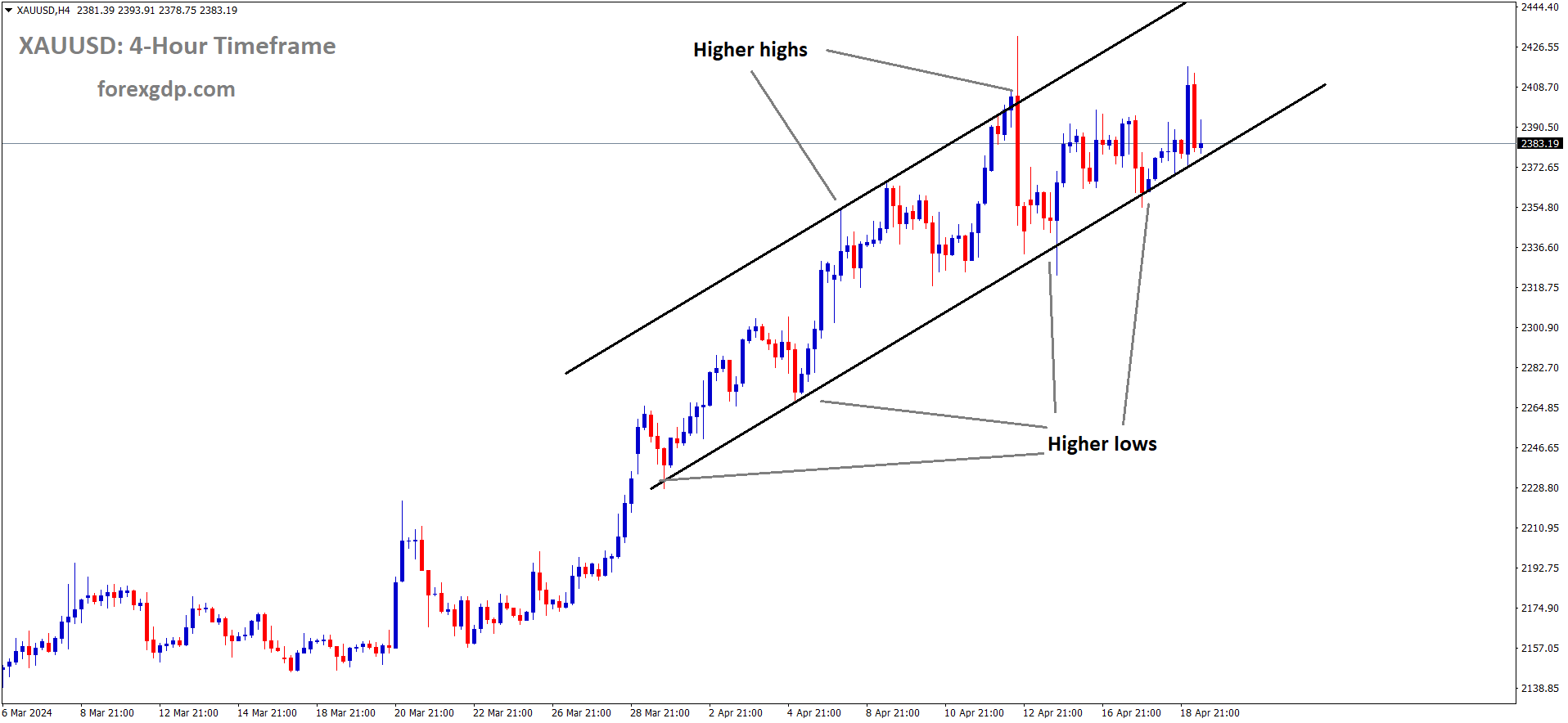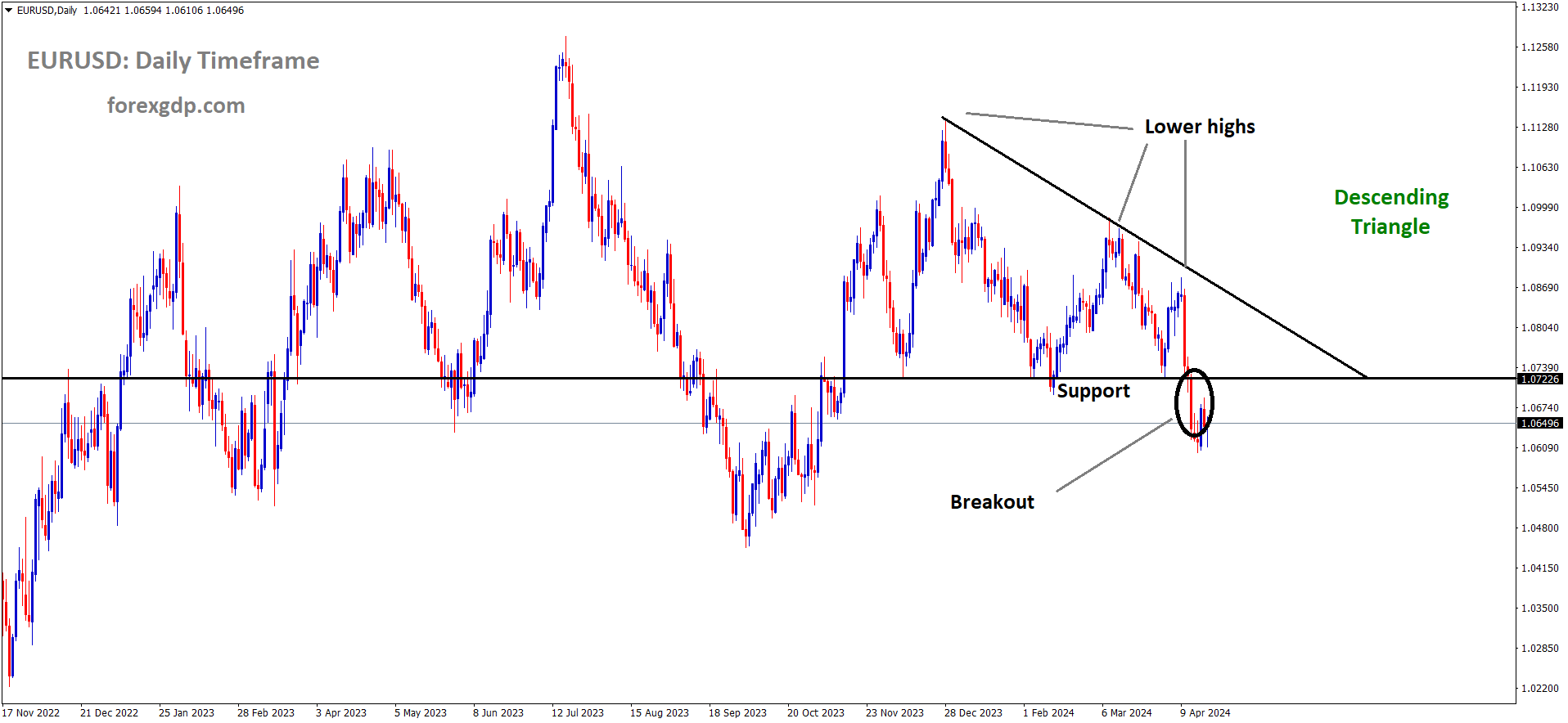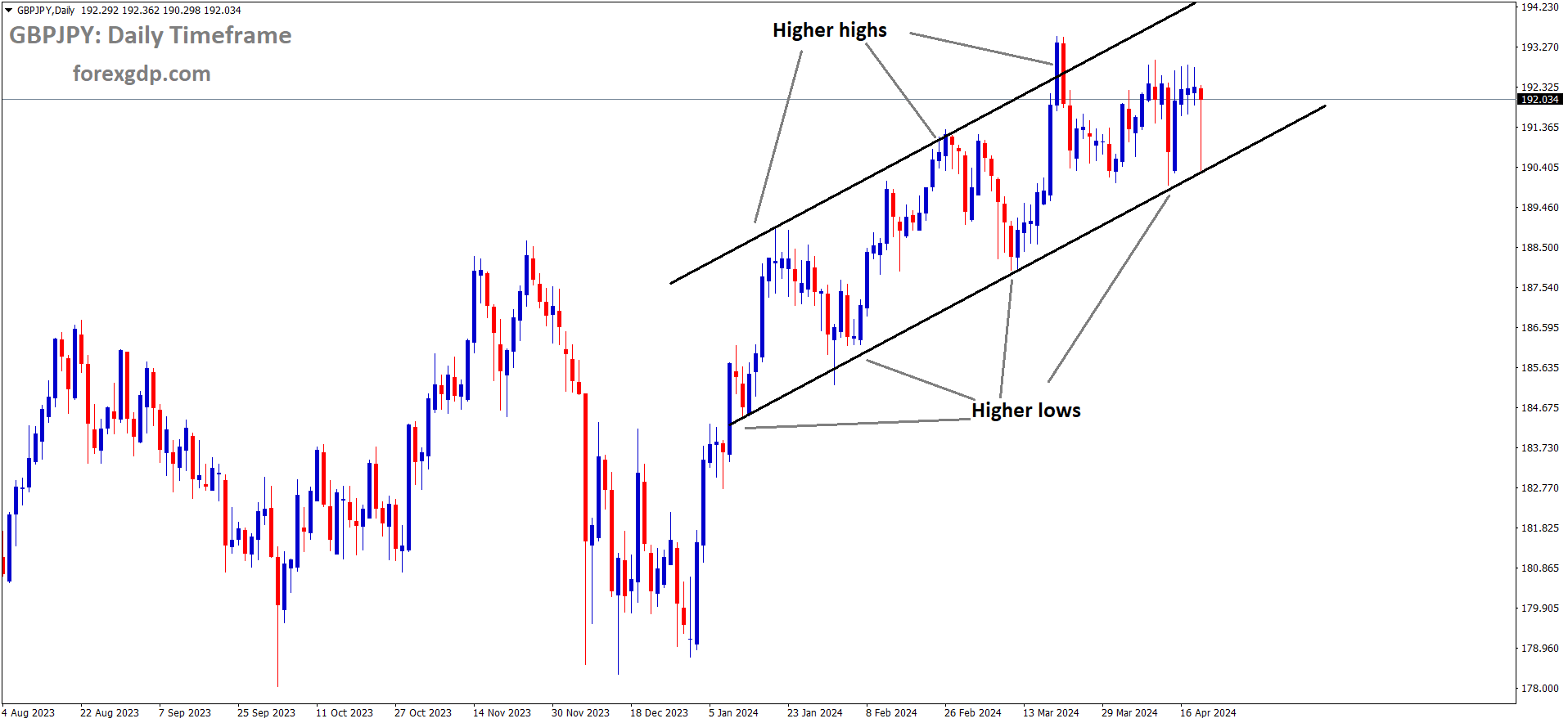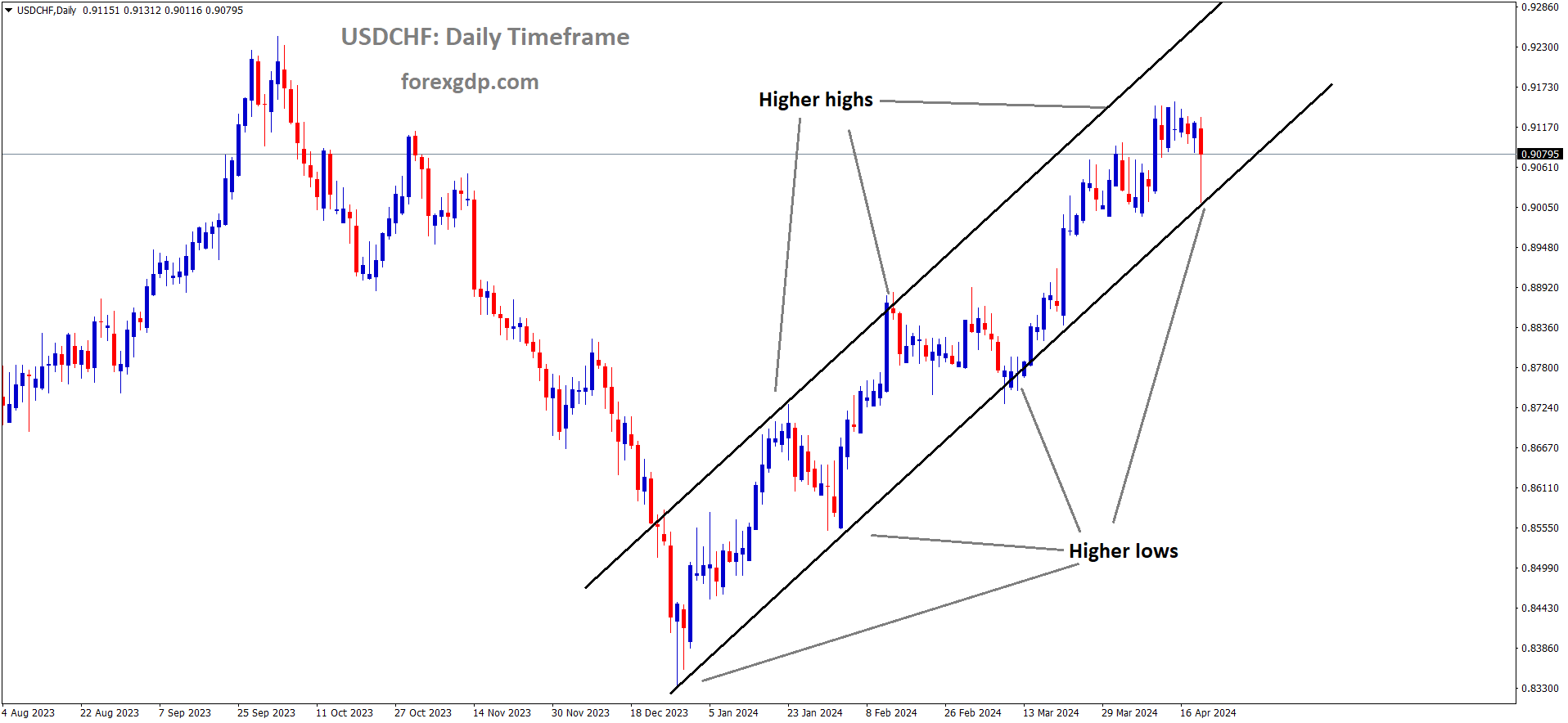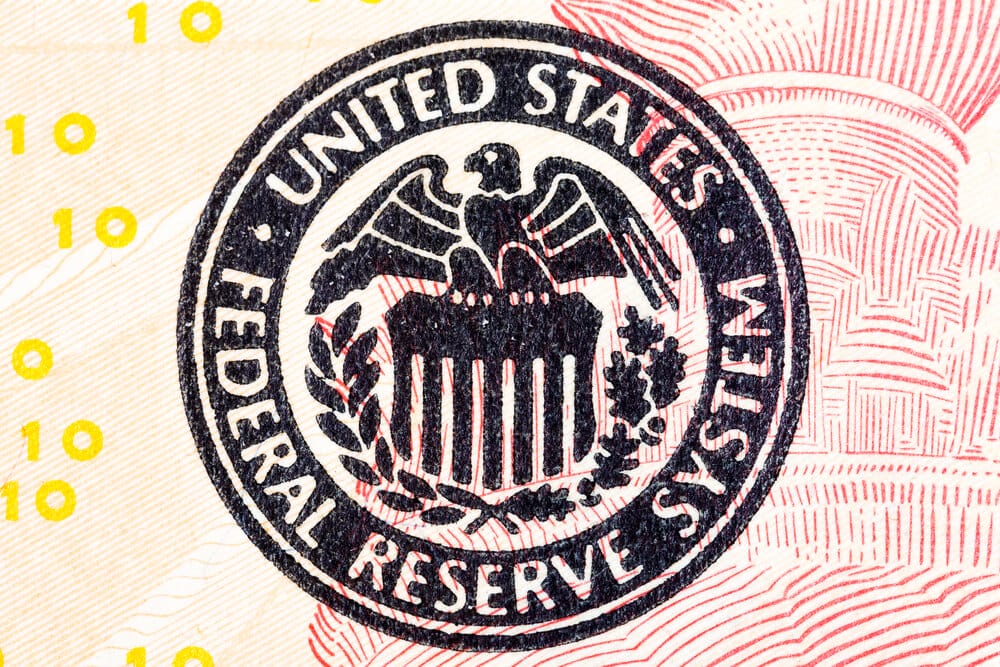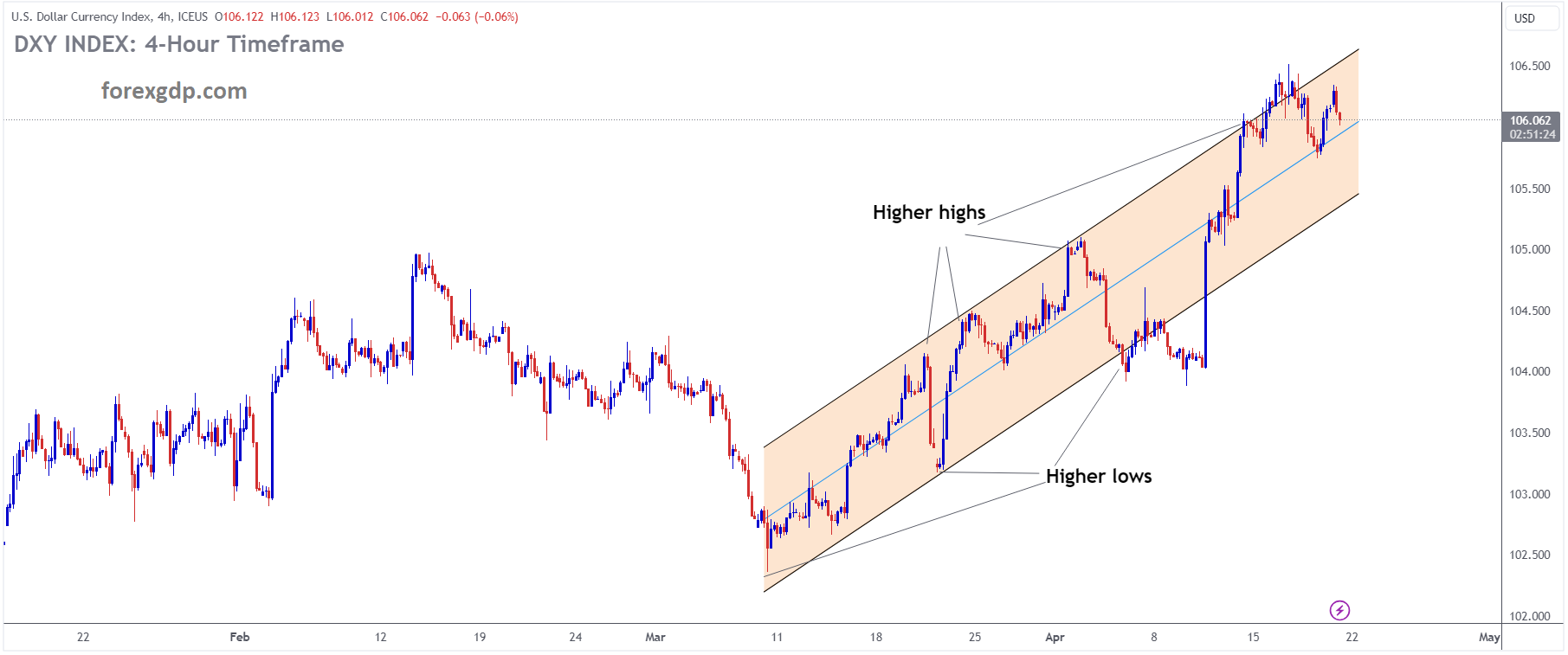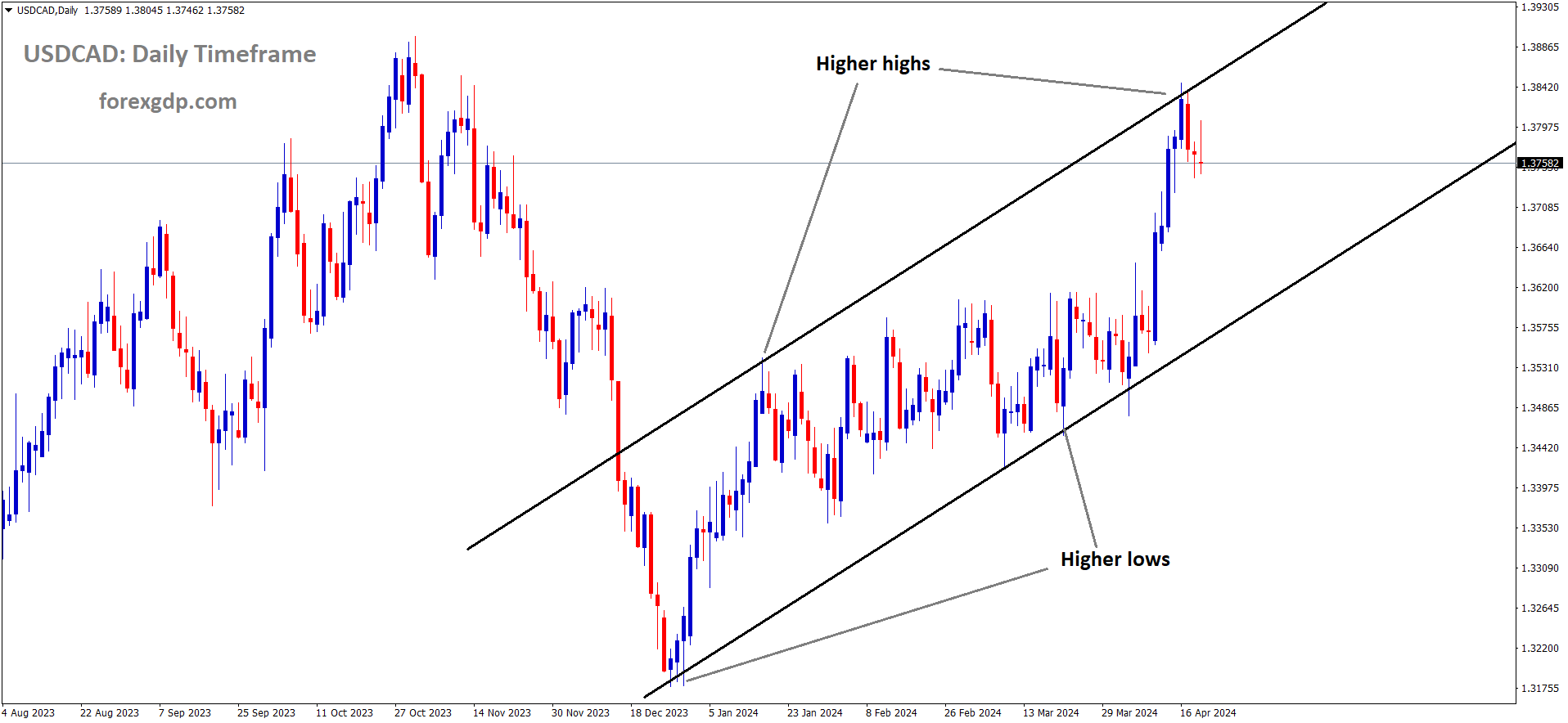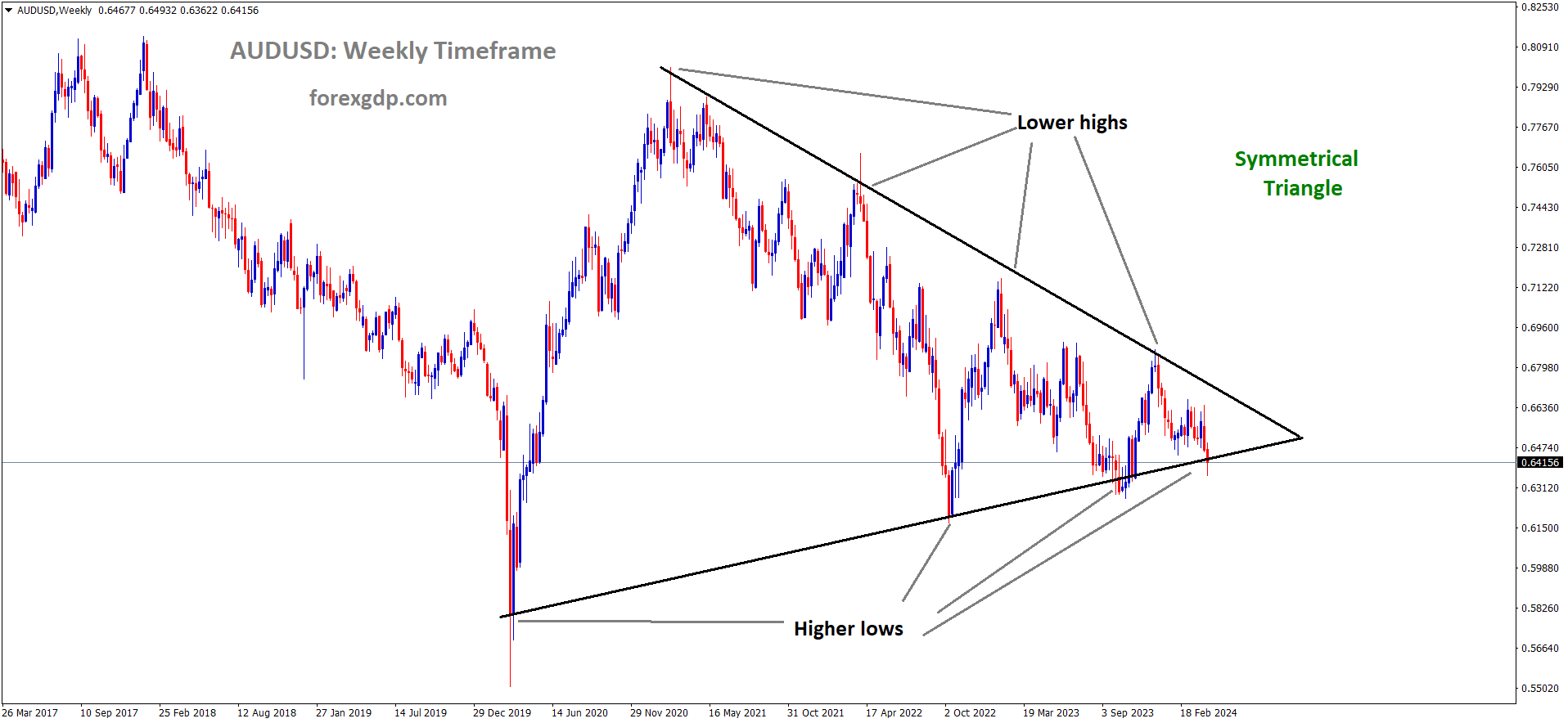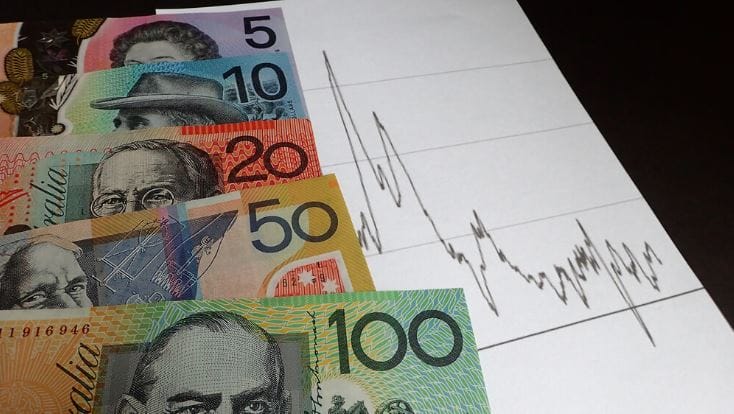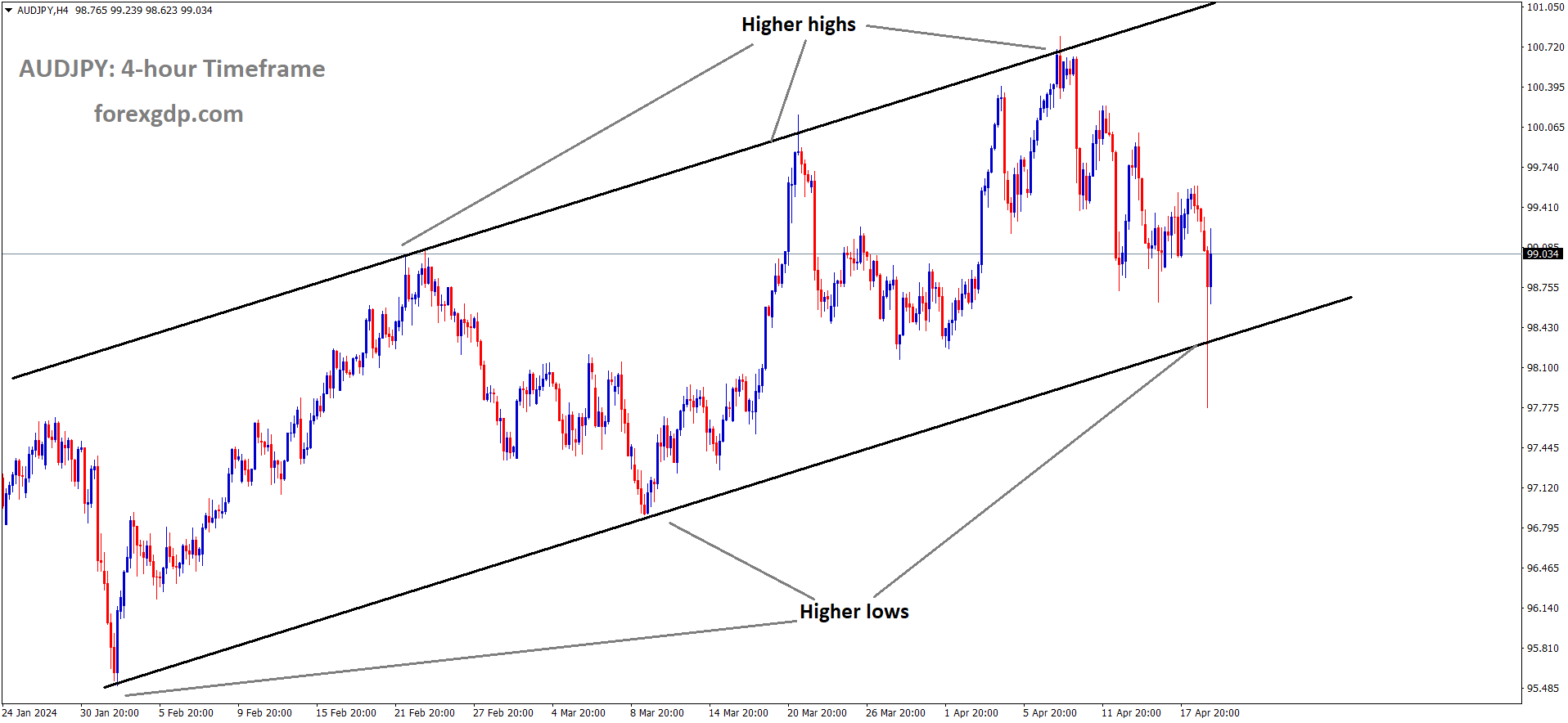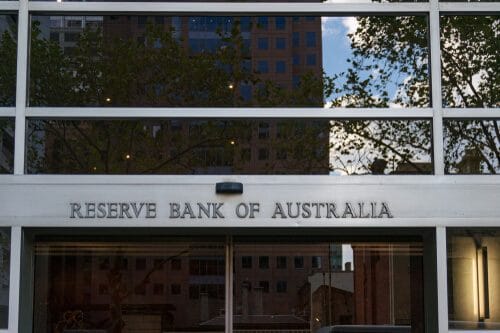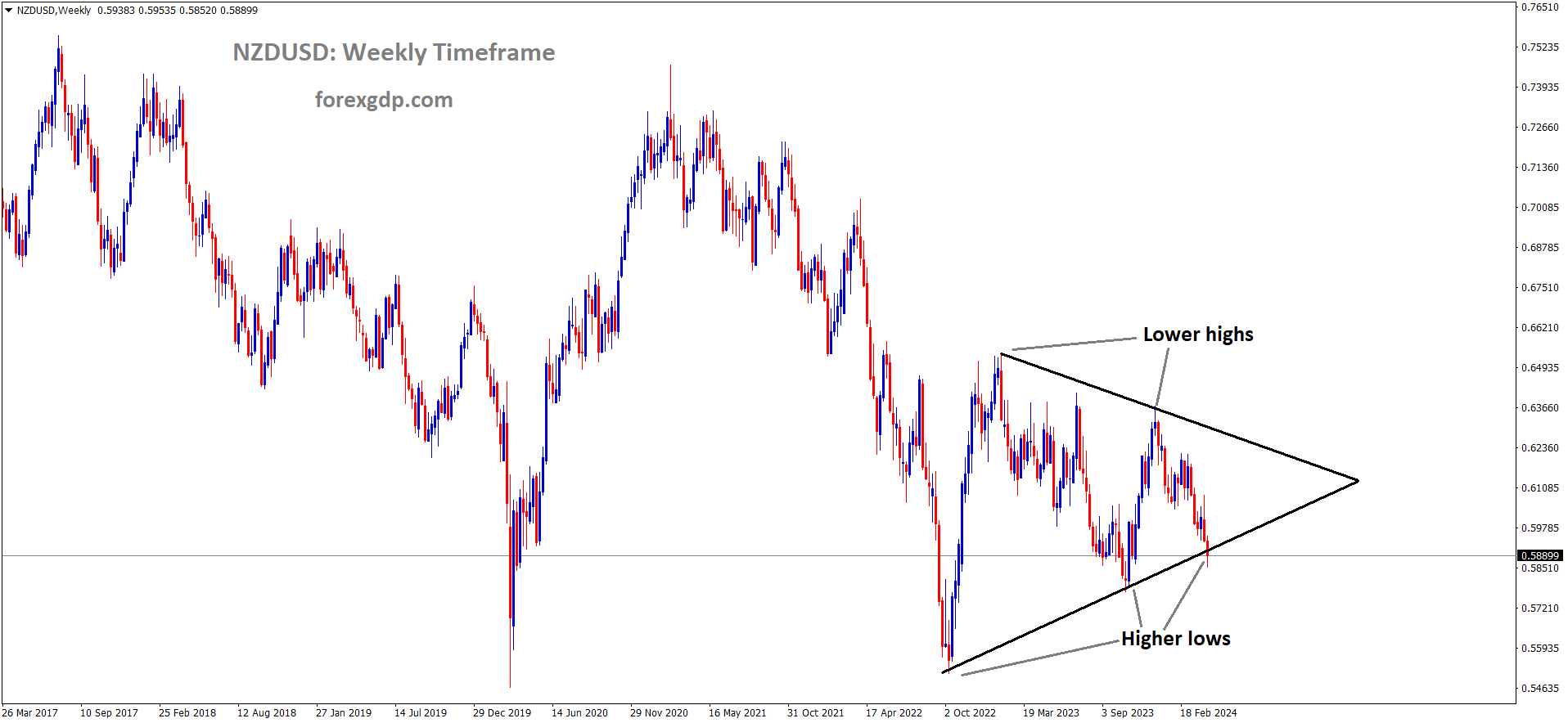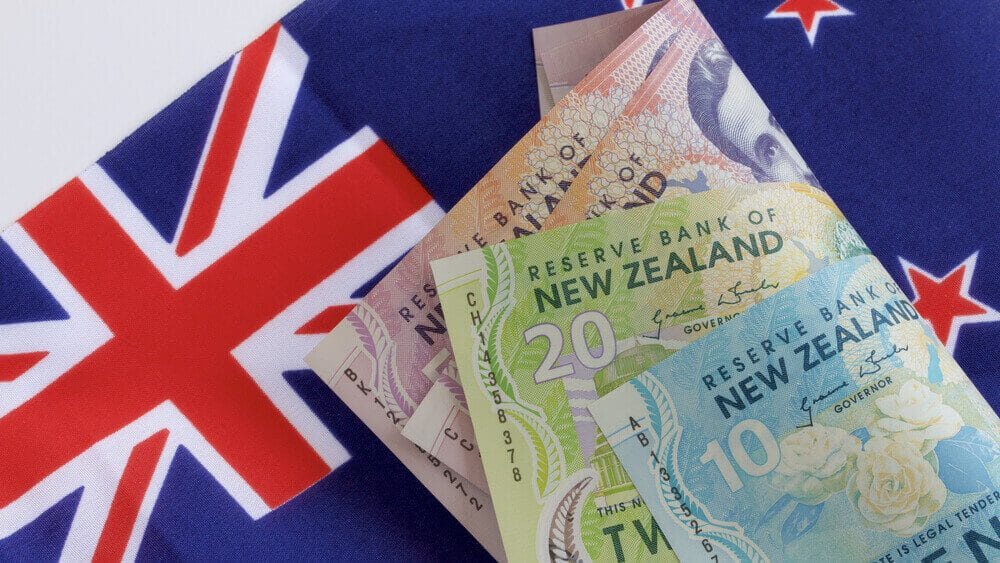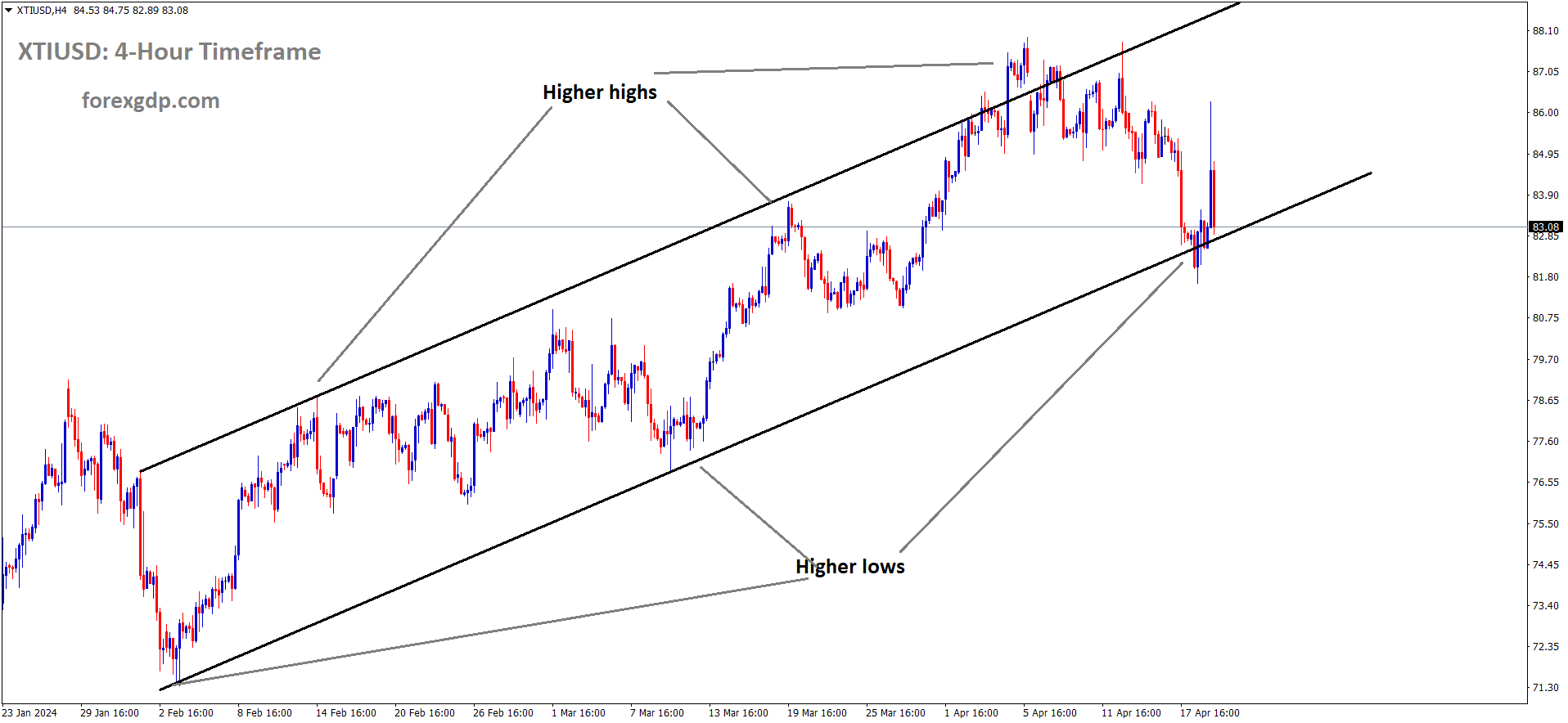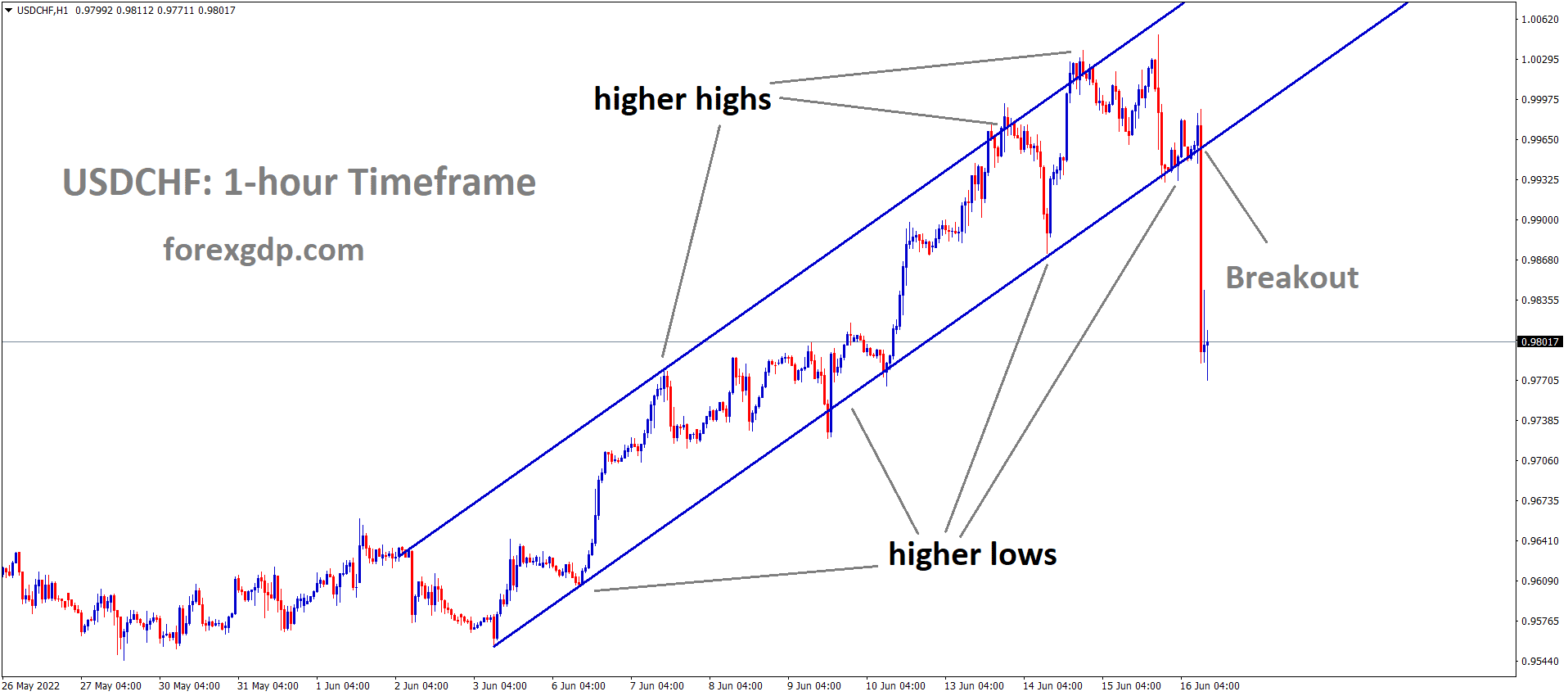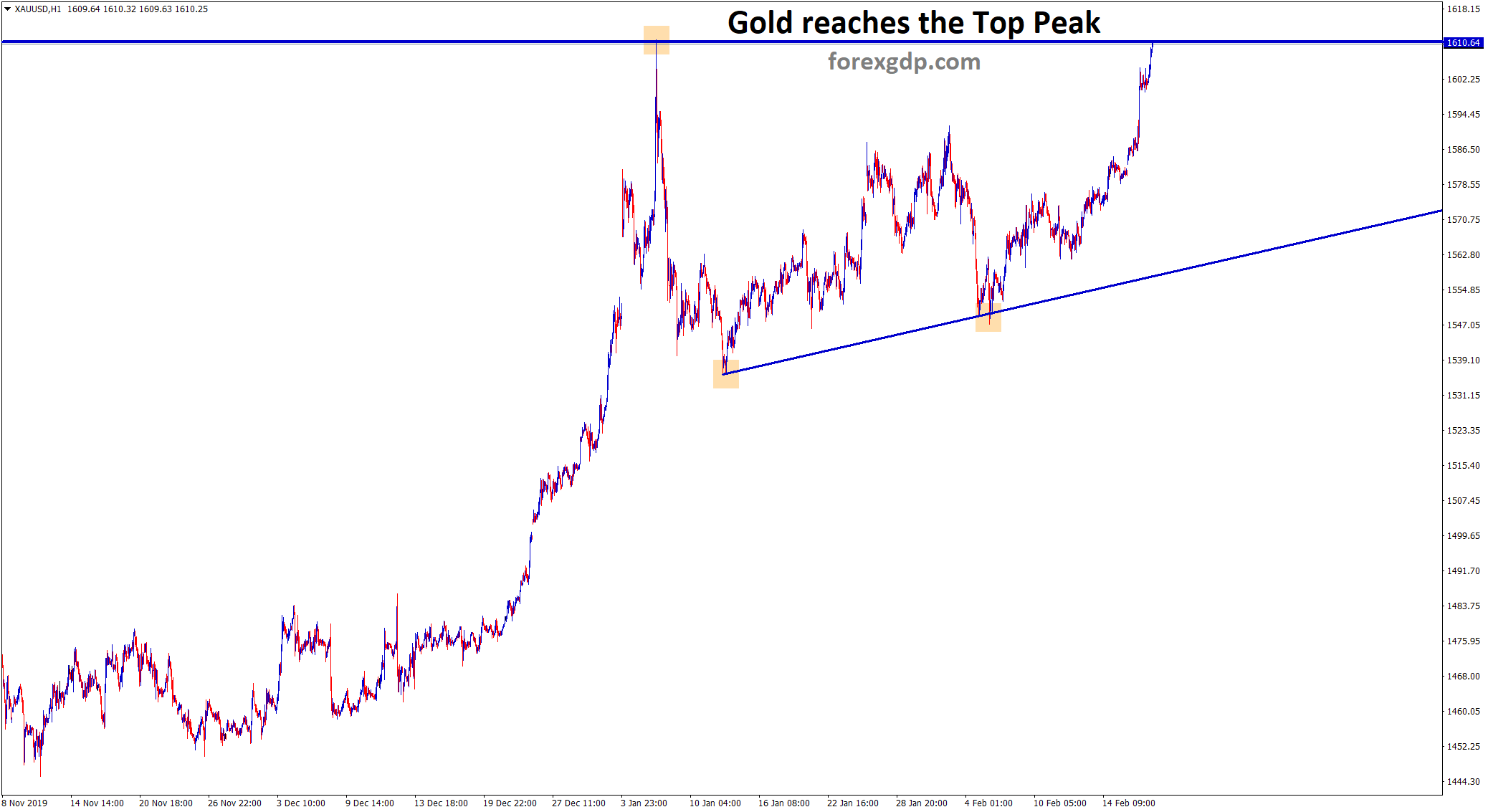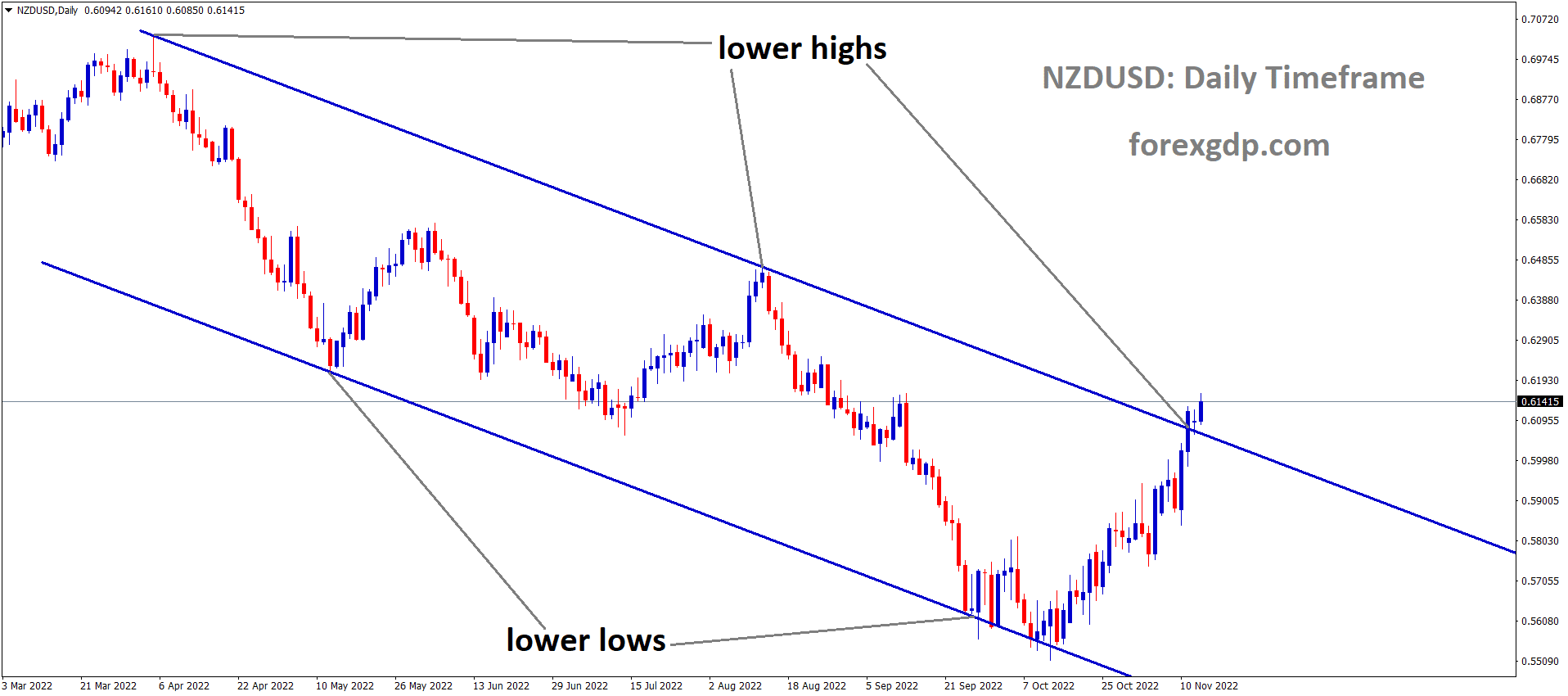XAUUSD Gold price is moving in an Ascending channel and the market has rebounded from the higher low area of the channel
XAUUSD – Gold Price Forecast: XAU/USD Surges Above $2,410 Amid Israeli Attack Reports on Iran
The Gold prices reached $2410 after the Iran attacked by Israel Drone attack yesterday night. Atlanta FED President Raphael Bostic said inflation rate in the US economy is so higher so rate cuts need not be do in this coming months. New York FED President John Williams said data dependant rate cut has to do, but now it is not the time to do rate cut because of higher inflation prevailing in the market.
Gold price rallies to nearly $2,410 per troy ounce during the Asian trading session on Friday. The surge in the value of the safe-haven metal comes amidst a wave of risk aversion sweeping through financial markets. This sentiment was triggered by reports from ABC News confirming Israeli missile strikes on a site in Iran, escalating tensions in the already volatile Middle East region.
Meanwhile, according to Reuters, citing Iran’s Fars News Agency, local residents reported hearing explosions at the central Isfahan airport. However, the exact cause of these explosions remains unclear, and investigations are underway to ascertain the details surrounding the incident.
In addition to geopolitical tensions, the performance of the US Dollar (USD) also influences gold prices. On Thursday, Federal Reserve (Fed) officials delivered hawkish messages, resulting in a surge in US Treasury yields and bolstering the Greenback. This, in turn, dampened the upward momentum of non-yielding assets like gold, as the stronger USD makes bullion more expensive for holders of other currencies.
Notably, Atlanta Fed President Raphael Bostic highlighted concerns over excessive US inflation, emphasizing the need for the Fed to address inflationary pressures. Conversely, New York Fed President John Williams reiterated the Fed’s commitment to data-dependency, indicating that there is currently no immediate need to consider lowering interest rates.
EURUSD – dips below 1.0650 amid hawkish Fed comments
The ECB policymakers hopes for June month rate cuts due to inflation in the march month near to Goal of 2% as 2.4%. So Euro currency is moving lower against USD. The Middle east tensions also down the Euro against USD this week. The ECB President Lagarde said in the latest speech still inflation is more far away from our target, but policy members urged for rate cuts in the June month.
EURUSD has broken the Descending triangle pattern in downside
EUR/USD continues its downward movement, hovering around 1.0640 in the early Asian trading session on Friday. This decline comes after a retreat from the weekly highs of 1.0690. The US Dollar (USD) receives a boost from hawkish remarks made by Federal Reserve (Fed) officials. Later in the day, Chicago Fed Austan Goolsbee is scheduled to speak, which could influence market sentiment further.
On Thursday, the US Department of Labor reported that the number of new claims for unemployment benefits rose to 212,000 for the week ending April 13, slightly above the previous week’s figure of 211,000 (revised from 212,000). Despite this increase, the labor market remains resilient, leading investors to anticipate a delay in interest rate cuts by the US Fed until September.
Fed Chair Jerome Powell emphasized earlier in the week that monetary policy needed to remain restrictive for a longer duration due to the unexpected upside surprises in inflation during the first quarter of the year. Atlanta Fed President Raphael Bostic echoed this sentiment on Thursday, stating that US inflation is expected to return to the 2% target at a slower pace. He expressed comfort in exercising patience, indicating that rate cuts are likely by year-end. Meanwhile, New York Fed President John Williams shared a similar view, stating that there is no urgent need to cut rates and that current monetary policy is adequate. These comments, alongside robust US economic data, contribute to the strength of the Greenback and act as a deterrent for the EUR/USD pair’s upward movement.
On the other side, the European Central Bank (ECB) signals a potential interest rate cut in June. ECB Vice President Luis de Guindos stated that the central bank stands ready to adjust its monetary policy stance if economic data evolves as expected. Additionally, ECB policymaker François Villeroy de Galhau emphasized the need for an interest rate cut in June to prevent falling behind the inflation curve.
Despite certain inflation data remaining higher than anticipated, ECB policymaker Joachim Nagel suggests that a rate cut in June is increasingly likely. This speculation puts selling pressure on the Euro (EUR) and limits the upside potential of the EUR/USD pair.
GBPJPY – Below 192.00 After UK Retail Sales Data
The UK Retail sales for the March month came at 0% MoM versus 0.30% is expected and 0.10%printed in the last month. Rising tensions between Iran and Israel makes GBP weaker against USD. BoJ Governor Ueda said inflation increased wages and Yen increased inflation makes hopes for another rate hike in this year if properly attained as per our goal.
GBPJPY is moving in an Ascending channel and the market has rebounded from the higher low area of the channel
This movement was influenced by the disappointing UK Retail Sales data, which weighed on the performance of the Pound Sterling (GBP). Moreover, escalating tensions between Israel and Iran added to market concerns about a potential broader conflict in the Middle East, thereby bolstering safe-haven currencies like the Japanese Yen (JPY) and creating resistance for the GBP/JPY cross.
According to the latest data from the Office for National Statistics, UK Retail Sales for March showed no change (0% MoM) from the previous month’s 0.1% increase, falling short of market expectations of a 0.3% rise. Additionally, Retail Sales excluding fuel declined by 0.3% MoM, contrasting with the 0.3% growth recorded in February. The weaker-than-expected retail figures exerted selling pressure on the GBP against the JPY.
Meanwhile, Bank of Japan (BoJ) board member Asahi Noguchi remarked on Thursday that while the “main scenario” suggests future rate hikes are likely to be gradual, the pace of such increases would depend on economic data. BoJ Governor Kazuo Ueda also indicated that the central bank might consider raising interest rates again if significant Yen depreciation significantly boosts inflation. Ueda highlighted the potential influence of currency movements on the timing of future policy adjustments.
Early on Friday, reports from US officials to CBS News indicated that an Israeli missile had struck Iran. While the target remains unclear, blasts were reported in Iran’s central province of Isfahan. The heightened tensions between Israel and Iran have put Iran on high alert, following Israel’s announcement of retaliatory measures against an Iranian strike on Saturday night. These escalating tensions could increase demand for safe-haven assets, thereby sustaining the strength of the JPY.
USDCHF – Israeli Attack on Iran Spurs Rush to Yen, Swiss Franc
The Swiss Franc is appreciated against counter pairs after the Iran attacked by Israel yesterday.
The safe haven currencies are more parking of funds during war times and crisis times. SNB has done rate cut in last month, but critical times Swiss Franc is treated as safe haven for investors.
USDCHF is moving in an Ascending channel and the market has rebounded from the higher low area of the channel
Reports of an Israeli attack on Iran sent shockwaves through the markets on Friday, prompting investors to seek refuge in traditional safe-haven assets like the Swiss franc and the yen as risk aversion swept across trading floors.
According to Reuters, citing sources familiar with the matter, Israel launched an attack on Iran, marking a significant escalation in the ongoing conflict in the Middle East. The news triggered a massive sell-off in risk assets, causing oil and gold prices to surge while sparking a rally in U.S. Treasuries and safe-haven currencies.
Although some of the initial market movements were later retraced as details about the attack remained scarce, the Swiss franc, known for its safe-haven status, remained resilient, trading 0.35% higher at 0.9089 per dollar. Similarly, the yen rose roughly 0.2% to 154.38 per dollar, reflecting investors’ nervousness amid geopolitical tensions.
New York Federal Reserve President John Williams and Atlanta Federal Reserve President Raphael Bostic both made hawkish comments, signaling a cautious approach to monetary policy. Bostic expressed confidence in patience, suggesting that rate cuts are likely by year-end as inflation returns to the Fed’s 2% target at a slower pace than expected.
Meanwhile, risk-sensitive currencies like the Australian and New Zealand dollars tumbled to five-month lows, reflecting investors’ heightened aversion to risk. Bitcoin, known for its volatility, also experienced a sharp decline, briefly slipping below the $60,000 level.
The prospect of higher interest rates in the United States, driven by strong economic data and inflationary pressures, has led traders to recalibrate their expectations for Federal Reserve rate cuts. This shift has bolstered the dollar and put pressure on Asian currencies, prompting concerns among finance chiefs in the region about potential joint interventions.
Looking ahead, the Bank of Japan’s upcoming monetary policy meeting will be closely watched for any indications of future rate adjustments. Meanwhile, sterling and the euro faced downward pressure, with expectations of a first Fed rate cut being pushed back while the European Central Bank is anticipated to begin its rate easing cycle in June.
USD INDEX – Bostic Forecasts Rate Cuts by Year End
The Atlanta FED President Raphael Bostic said Iam not Mad for hurry to rate cuts and depending on the incoming data month on month, CPI Data for the US Economy is higher than our target, it will be come down to slower more than public expected.So rate cuts may or may not be this year, if inflation slowing to 2% target this year then we see for rate cuts in the policy settings, I am not expected recession the US economy this year, Job rises, wages rises and inflation is moving to rise. So We did not pressure up for rate cuts in this current higher inflation price scenario.
USD INDEX is moving in an Ascending channel and the market has fallen from the higher high area of the channel
During his speech at the Greater Fort Lauderdale Alliance in Florida on Thursday, Atlanta Federal Reserve Bank President Raphael Bostic provided insights into the current state of U.S. inflation and the Federal Reserve’s monetary policy outlook.
Bostic emphasized that U.S. inflation is expected to gradually return to the central bank’s target rate of 2%, but the process may unfold more slowly than anticipated by many observers. He highlighted the following key points:
– Inflation levels are currently deemed too high.
– The journey toward achieving 2% inflation will likely be slower and potentially uneven.
– While inflation is moving in the desired direction, the pace of progress is moderate.
– Bostic expressed a willingness to exercise patience in monetary policy decisions.
– He indicated that he does not feel a sense of urgency to swiftly reach inflation targets.
– Bostic suggested that maintaining growth in employment and wages, along with progress in inflation, could support the case for maintaining current interest rate levels.
– He does not foresee an imminent recession in the economic outlook.
– Bostic projected that interest rate cuts may not materialize until later in the year.
– Despite the challenges, he remains optimistic about continued economic expansion once both inflation and employment objectives align with the Federal Reserve’s mandates.
USDCAD – Eases as Iranian Media Denies Attack, Stays Below 1.3800
USDCAD moved slight higher after the Iran attacked from Israel last day, Crude Oil prices are jumped from lows, this jump action is supported for Canadian Dollar against counter pairs. Domestic data is still favour for Dovish outlook from BoC but geopolitical tensions created support for Hawkish in Canadian Dollar.
USDCAD is moving in an Ascending channel and the market has fallen from the higher high area of the channel
The USD/CAD pair initially gained momentum as the safe-haven US Dollar (USD) surged following reports of Israeli missiles striking a site in Iran, escalating tensions in the Middle East. However, Iranian media promptly refuted these reports, denying any foreign attack on Iranian cities, including Isfahan.
As per Reuters, citing Iran’s Fars News Agency, local residents reported hearing explosions at the central Isfahan airport, although the cause of these explosions remains undisclosed.
Meanwhile, the Canadian Dollar found some support from the rise in crude oil prices, given Canada’s status as the largest oil exporter to the United States (US). Western Texas Intermediate (WTI), the US crude oil benchmark, traded around $83.80 at the time of reporting. Crude oil prices surged following confirmation from US officials about Israeli missiles hitting a site in Iran.
On the US Dollar’s front, Federal Reserve (Fed) officials delivered hawkish messages on Thursday, leading to a spike in US Treasury yields and strengthening the US Dollar. This bullish sentiment lent support to the USD/CAD pair.
Traders are keeping a close watch on upcoming speeches by Atlanta Fed President Raphael Bostic, who will discuss the US economic outlook at the University of Miami, Florida. Additionally, Chicago Fed President Austan Goolsbee is scheduled to participate in a moderated Q&A session at the Association for Business Journalists 2024 SABEW Annual Conference in Chicago.
AUDUSD – AUD Holds onto Key Level Despite Stronger USD
The Australian Dollar moved down after the Iran reported Israel drone attacks on the centre of Isfahan nuclear site. RBA Monetary policy remained Dovish outlook makes Australian Dollar further down in the market. Fears of War times development currencies like Australia, NZ Dollar will be sudden fall against Developed currencies.
AUDUSD is moving in the symmetrical triangle pattern and the market has reached the bottom area of the pattern
The Australian Dollar (AUD) continues to trade in negative territory, having recovered from earlier losses on Friday. The AUD/USD pair faced downward pressure as riskier assets experienced a decline amidst heightened risk aversion in financial markets. This sentiment was exacerbated by confirmation from ABC News that Israeli missiles had targeted a site in Iran, escalating tensions in the Middle East.
On Friday, the Australian Dollar (AUD) encountered challenges alongside a decline in the ASX 200 Index, nearing its two-month low of 7,489. This trend was influenced by weak cues from Wall Street overnight. Additionally, Australia’s 10-year government bond yield retreated from over four-month highs, as investors anticipated a dovish outlook from the Reserve Bank of Australia (RBA) regarding monetary policy.
The US Dollar Index (DXY), which measures the performance of the US Dollar (USD) against a basket of six major currencies, advanced amid growing concerns over the potential escalation of the Israel-Gaza conflict in the Middle East. This prompted investors to seek safe-haven assets, thereby strengthening the USD. Furthermore, hawkish remarks from Federal Reserve (Fed) officials on Thursday led to a surge in US Treasury yields and the US Dollar, adding downward pressure on the AUD/USD pair.
Traders are expected to closely monitor upcoming speeches from Federal Reserve officials. Atlanta Fed President Raphael Bostic is scheduled to discuss the US economic outlook at the University of Miami, Florida, while Chicago Fed President Austan Goolsbee is set to participate in a moderated Q&A session at the Association for Business Journalists 2024 SABEW Annual Conference in Chicago.
Citing Iran’s Fars News Agency, locals reported hearing explosions at the central Isfahan airport, although the cause remains unknown. However, Iranian media has refuted reports of a foreign attack on Iranian cities, including Isfahan.
In other news, US economic indicators showed mixed results, with Initial Jobless Claims slightly below expectations, the Philadelphia Fed Manufacturing Survey surpassing forecasts, and Existing Home Sales Change declining. Meanwhile, Australia’s Employment Change for March fell short of expectations, while the Unemployment Rate rose slightly but remained within expectations.
AUDJPY – Recovers from Monthly Lows Amid Israeli Attack on Iran News
The Japan CPI Data came at March month is 2.7% YoY versus 2.8% printed in the previous month. Israel attacked Iran last day makes double threat to Australian Dollar against Japanese Yen today, So Japanese Yen moved higher against counter pairs after the data printed.
AUDJPY is moving in an Ascending channel and the market has rebounded from the higher low area of the channel
AUD/JPY has extended its decline for the second consecutive session amid heightened risk aversion in financial markets, triggered by reports from ABC News indicating Israeli missile strikes on a site in Iran. Prior to this development, the Japanese Yen (JPY) faced pressure following the release of Japan’s inflation data on Friday.
Japan’s National Consumer Price Index (CPI) for March, excluding fresh food but including fuel costs, rose by 2.7% year-over-year, a slight deceleration from the 2.8% increase recorded in February. This index, which tracks the price fluctuations of goods and services purchased by households, reflects mild increases in food prices, although it remains above the Bank of Japan’s (BoJ) 2% target due to the weakened Yen and elevated commodity prices.
The Japanese Yen received a boost from hawkish remarks made by Bank of Japan’s Governor Kazuo Ueda, who indicated that the central bank might consider raising interest rates again if significant declines in the Yen significantly boost inflation. Ueda’s comments underscore the potential impact of currency movements on the timing of future policy adjustments.
Meanwhile, the Australian Dollar (AUD) faced losses, coinciding with a downturn in the ASX 200 Index on Friday. Additionally, Australia’s 10-year government bond yield retreated from over four-month highs, dropping below 4.3% following soft domestic jobs data. The Reserve Bank of Australia’s (RBA) dovish outlook on monetary policy was reinforced by this data.
Analysts at Rabobank anticipate that stronger Japanese economic indicators, coupled with expectations of potential rate hikes by the BoJ later in the year, could lend broad-based strength to the Japanese Yen. However, they caution that the pace of future rate hikes by the BoJ may be slower compared to its global counterparts, as domestic wage increases have yet to fully translate into higher prices.
In Australia, Employment Change for March fell short of expectations, posting a reading of -6.6K against the anticipated 7.2K. Additionally, Australia’s Unemployment Rate rose to 3.8%, albeit lower than the expected 3.9%. The RBA signaled a reluctance to further raise rates, although it emphasized the need for greater confidence in the inflation outlook before considering rate cuts, according to a Westpac report.
NZDUSD – Under Selling Pressure Below 0.5900 amid Risk-Off Mood
The NZ Dollar moved down after the Iran attacked from Israel yesterday night, US Officials confirmed this drone attack from Israel side. Kiwi Front, Inflation is slower down but not to the target of 2-3%, So RBNZ may be do rate cuts from the November month.
NZDUSD is moving in the symmetrical triangle pattern and the market has reached the bottom area of the pattern
During the early European session on Friday, the NZD/USD pair is facing downward pressure, hovering around the 0.5880 level. This pressure is attributed to the prevailing risk-off sentiment amidst escalating tensions between Israel and Iran, which bolsters the demand for the US Dollar (USD) and exerts downward pressure on NZD/USD. Concurrently, the US Dollar Index (DXY) is trending higher above 106.20, nearing its peak levels since November 2023.
US officials disclosed that Israel conducted military strikes against Iran, notifying the Biden administration of the imminent attack within the next 24 to 48 hours. Notably, Israel assured the US that its nuclear facilities would not be targeted. This development intensifies geopolitical tensions in the Middle East, prompting investors to closely monitor the situation. The uncertainty and conflict in the region may drive investors towards safe-haven assets, bolstering the USD.
Additionally, the likelihood of the US Federal Reserve (Fed) postponing further interest rate cuts lends support to the USD. Several Fed officials have emphasized the persistence of elevated US inflation levels and the need for greater confidence in its trajectory before considering policy adjustments.
On the Kiwi front, recent data from Statistics New Zealand revealed a continued decline in inflation, although it remains above the Reserve Bank of New Zealand’s (RBNZ) target range of 1 to 3%. This could lead the RBNZ to maintain higher interest rates for an extended period, potentially limiting the downside for the New Zealand Dollar (NZD).
CRUDE OIL – WTI jumps to $85.00 on Israel-Iran tensions
The US oil moved to $85.00 after the Iran attacked by Israel last day. Now Iran retaliation is waiting back on Israel whether war is triggered or not. Both leaders of the country make fierce response against each other. So coming days war escalations makes Oil prices moved higher against USD.
XTIUSD Oil price is moving in an Ascending channel and the market has reached the higher low area of the channel
Amid the rising tension between Israel and Iran, the price of West Texas Intermediate (WTI) crude oil surged to $85.00 per barrel. This spike in the price of the black gold comes after a US official confirmed reports that Israeli missiles targeted a site in Iran.
On Friday, ABC News reported explosions at an airport in Isfahan, Iran, though the cause of these blasts remains unclear. The incident occurred amidst heightened geopolitical tensions, with Iran reportedly launching hundreds of drones and missiles in retaliation for an alleged Israeli strike on its Syrian embassy building. These events have stoked fears of a broader conflict in the Middle East, raising concerns about potential disruptions to oil supplies.
Additionally, recent hawkish comments from Federal Reserve officials have contributed to market sentiment. Atlanta Fed President Raphael Bostic remarked that US inflation levels are alarmingly high, indicating that the Fed still has work to do in addressing inflation concerns. Similarly, New York Fed President John Williams underscored the Fed’s reliance on data and expressed a lack of urgency in considering rate cuts. These remarks align with earlier statements from Fed Cleveland President Loretta Mester, who highlighted the need for greater confidence in inflation trajectory amidst higher-than-expected inflation levels.
Don’t trade all the time, trade forex only at the confirmed trade setups
Get more confirmed trade signals at premium or supreme – Click here to get more signals , 2200%, 800% growth in Real Live USD trading account of our users – click here to see , or If you want to get FREE Trial signals, You can Join FREE Signals Now!

